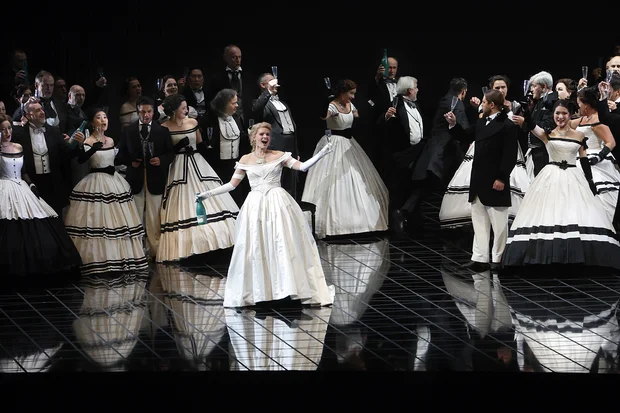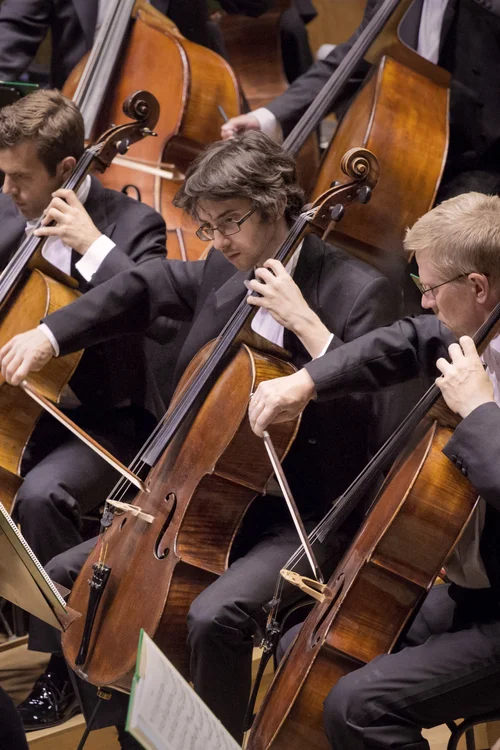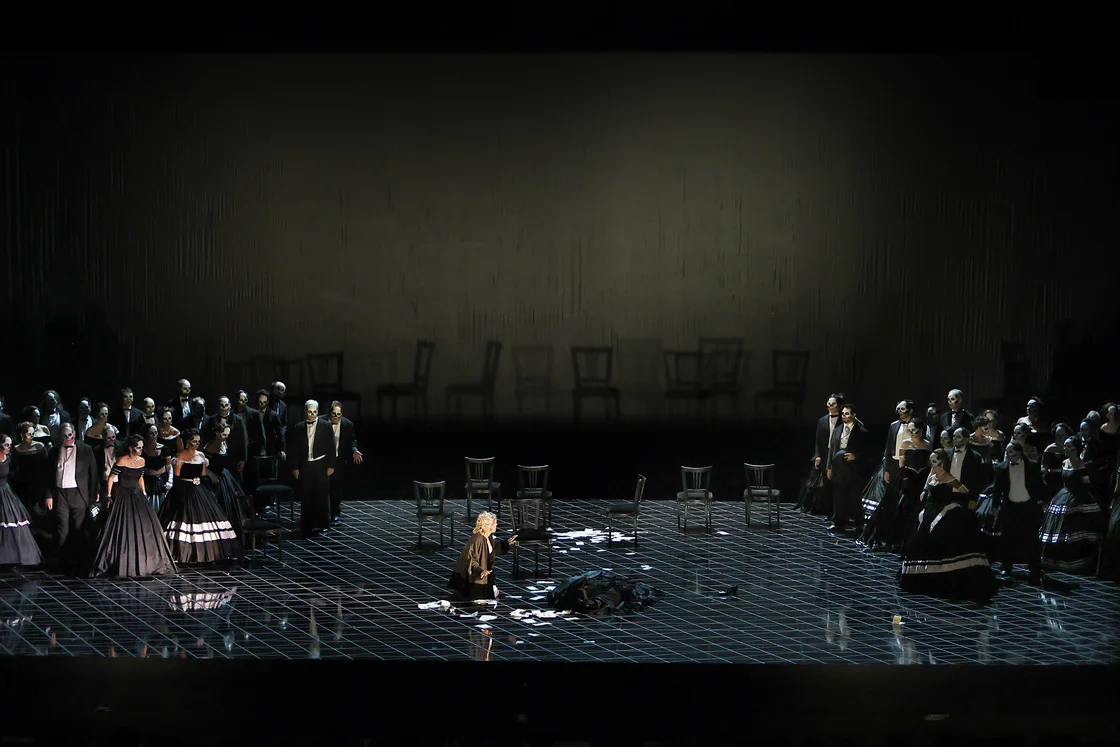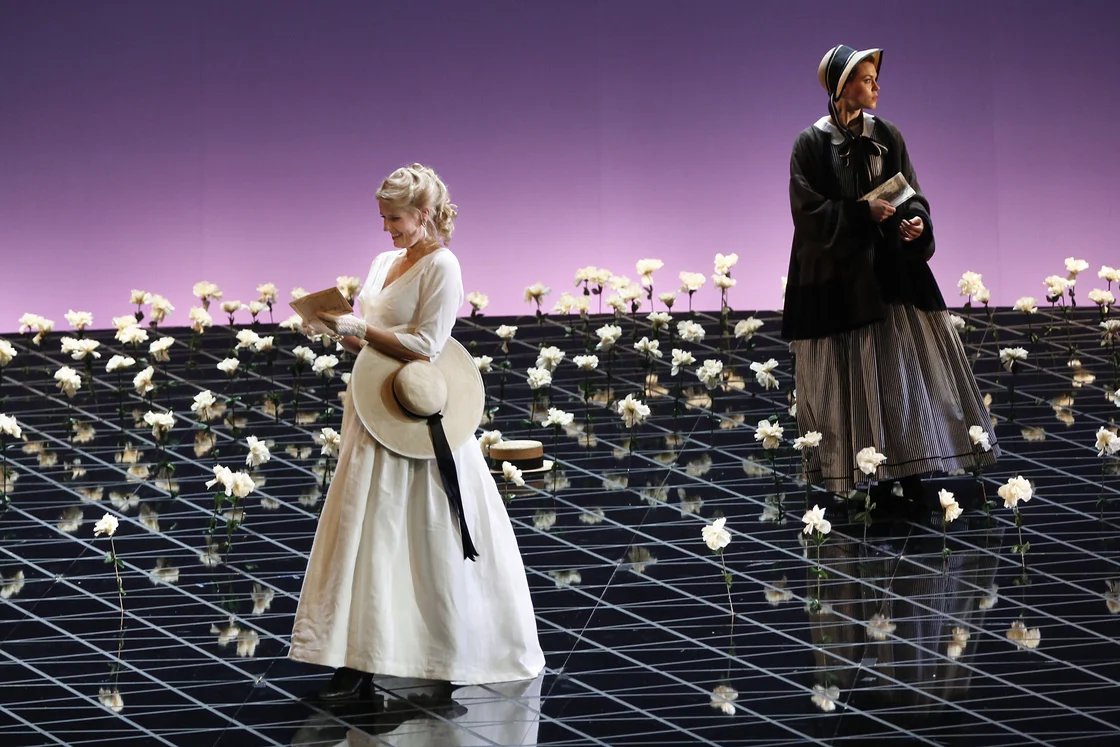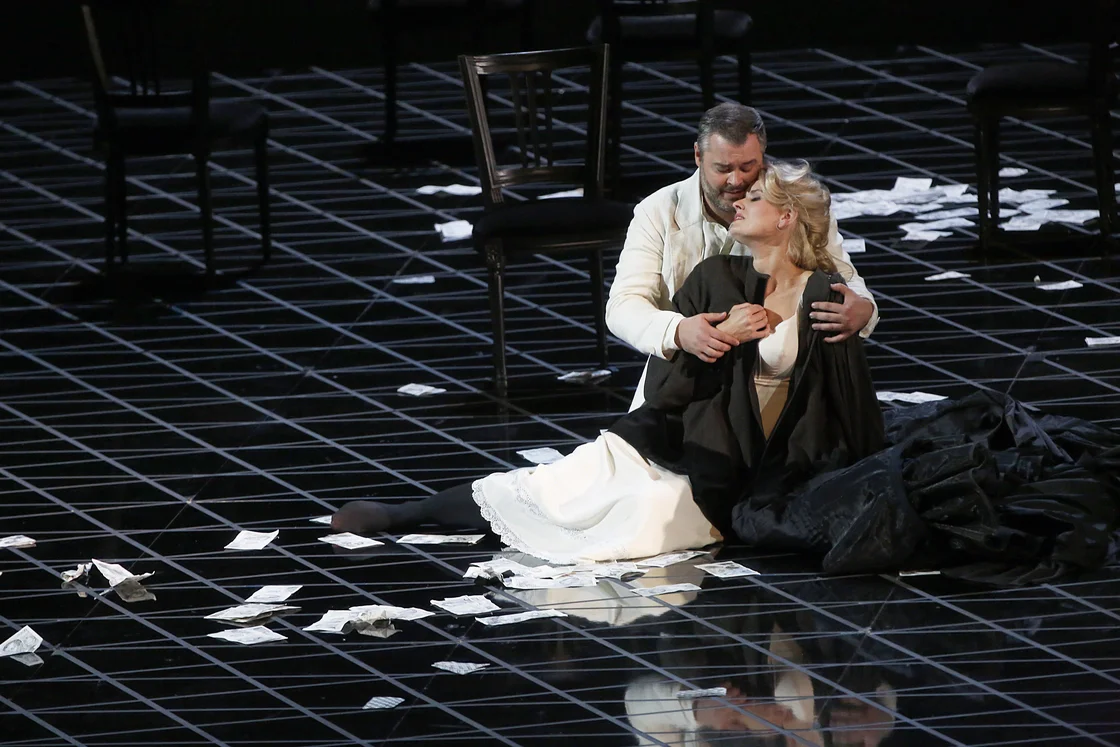Melodramma in three acts | Libretto by Francesco Maria Piave after the novel La dame aux Camélias by Alexandre Dumas | In Italian with German supertitles | Playing time ca. 2 1/4 hours | One intermission
La Traviata is the final work in the Trilogia Popolare, Verdi’s trio of masterpieces written between 1850-52. Once again, he was inspired by an outsider: after the jester in Rigoletto and the gypsy Azucena in Il Trovatore, the courtesan Violetta Valéry -- a woman whose charm surpasses her predecessors -- takes center stage here. The Parisian demimonde is the setting for the story of the unconditional and hopeless love between Alfredo Germont and the terminally ill Violetta. From the very beginning, their love is threatened not only by death, but also by the norms of the society and the honor of a family.
But the story’s grand themes of love, death, and morality only come into their own through Verdi’s music. He didn’t so much compose moments -- the morbid allure of the saintly whore, the passion of the young society lover, the unsavory milieu of the demimonde, and the moral standards of the father -- as much as the interplay between these moments. And so it is that Verdi’s most popular opera is about so much more than the tortured journey of an outsider: Here, psychologically-unstable inner worlds and societal norms confront one another in the most dramatic of ways.
